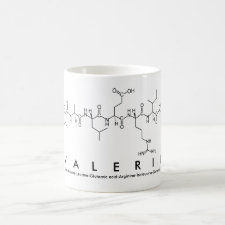
Authors: Boulanouar S, Combès A, Mezzache S, Pichon V
Article Title: Synthesis and application of molecularly imprinted polymers for the selective extraction of organophosphorus pesticides from vegetable oils.
Publication date: 2017
Journal: Journal of Chromatography A
Volume: 1513
Page numbers: 59-68.
DOI: 10.1016/j.chroma.2017.07.067
Alternative URL: http://www.sciencedirect.com/science/article/pii/S0021967317310683
Abstract: The increasing use of pesticides in agriculture causes environmental issues and possible serious health risks to humans and animals. Their determination at trace concentrations in vegetable oils constitutes a significant analytical challenge. Therefore, their analysis often requires both an extraction and a purification step prior to separation with liquid chromatography (LC) and mass spectrometry (MS) detection. This work aimed at developing sorbents that are able to selectively extract from vegetable oil samples several organophosphorus (OPs) pesticides presenting a wide range of physico-chemical properties. Therefore, different conditions were screened to prepare molecularly imprinted polymers (MIPs) by a non-covalent approach. The selectivity of the resulting polymers was evaluated by studying the OPs retention in pure media on both MIPs and non-imprinted polymers (NIP) used as control. The most promising MIP sorbent was obtained using monocrotophos (MCP) as the template, methacrylic acid (MAA) as the monomer and ethylene glycol dimethacrylate (EGDMA) as the cross-linker with a molar ratio of 1/4/20 respectively. The repeatability of the extraction procedure and of the synthesis procedure was demonstrated in pure media. The capacity of this MIP was 1mg/g for malathion. This MIP was also able to selectively extract three OPs from almond oil by applying the optimized SPE procedure. Recoveries were between 73 and 99% with SD values between 4 and 6% in this oil sample. The calculated LOQs (between 0.3 and 2μg/kg) in almond seeds with a SD between 0.1 and 0.4μg/kg were lower than the Maximum Residue Levels (MRLs) established for the corresponding compounds in almond seed
Template and target information: monocrotophos, MCP, organophosphorus pesticides, OPs, malathion
Author keywords: Molecularly imprinted polymers, organophosphorus pesticides, solid phase extraction, Vegetable oils, liquid chromatography, mass spectrometry



Join the Society for Molecular Imprinting

New items RSS feed
Sign-up for e-mail updates:
Choose between receiving an occasional newsletter or more frequent e-mail alerts.
Click here to go to the sign-up page.
Is your name elemental or peptidic? Enter your name and find out by clicking either of the buttons below!
Other products you may like:
 MIPdatabase
MIPdatabase









